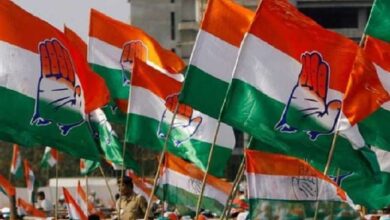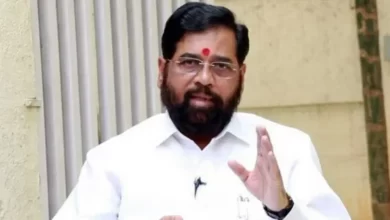rising problems due to inflation

[ad_1]
The up-and-down movement of inflation figures matters.
Saroj Kumar
The up-and-down movement of inflation figures matters. But the consumer experience is far more important. And it is a matter of experience that the consumer has to struggle to buy everything, whether goods or services, sold in the market.
Inflation is such a property of the market whose effect is dependent on the trend of earnings. If earnings are favorable, inflation cannot eat people. But when earnings start declining, inflation does not fail to show its violent form. Violence is also such that common man suffocates to death. This is more or less the situation in the country today. In contrast to inflation, the earnings trend is downward. The latest figures of inflation are being told a sign of improvement, but the experience of the common people living on credit is opposite. Actually, the question is not about the inflation rate, but the real question is about the effect of the rate. This effect on empty pockets is so deep that it is becoming difficult for people to survive.
Retail inflation based on the Consumer Price Index (CPI) improved marginally in August to 5.30 per cent from 5.59 per cent in July. Also that for the second consecutive month, the inflation rate remained within the maximum limit of six percent fixed by the Reserve Bank of India (RBI). RBI’s inflation rate for 2021-22 is estimated at 5.7 percent. This talk of improvement in inflation rate sounds good to say, but we do not have any accurate figures of how much the earnings have come down.
The sad face of the common man is visible even in the figures of reforms. The improvement is technical and seasonal in nature. The common man could hardly get even the slightest benefit from it. This improvement in retail inflation is a result of a higher base effect and lower prices of food items, especially cereals, sugar and vegetables. A major reason for the fall in the prices of food items is also four kilograms of free food grains every month to the 80 crore population. The demand for food grains has decreased in the market. But prices for foods outside the free plan are skyrocketing.
The cost of protein-rich foods and edible oil is also affecting the health of the people. Health spending has increased. In such a situation, the inflation rate of 7.8 percent in the health sector as against 7.4 percent in July is no less than salt on the burn. The inflation rate of food articles decreased from 3.96 percent in July to 3.11 percent in August, but oils and fats falling in the same category became expensive by 33 percent against 32.5 percent in July, meat and fish became expensive by 9.2 percent against 8.33 percent. . Pulses also remained high at 8.8 per cent. So is food grains even cheaper as long as there is a free plan! The high base effect will also not last after two months. That is, after Diwali, once again the inflation rate can go back to above six percent.
An increase in wholesale inflation simply means that primary goods have become expensive and manufacturing costs have increased. The effect of this lies with the consumers. One of the major reasons for the cost of manufactured products is the high cost of fuel. LPG, petrol and diesel became costlier by 48.1 per cent, 61.5 per cent, and 50.7 per cent, respectively, in August. The up-and-down movement of inflation figures matters. But the consumer experience is far more important. And it is a matter of experience that every thing sold in the market, be it goods or services, consumers have to struggle to buy it. Due to declining earnings relative to inflation, many things have become out of reach of the common man. Therefore, now the question in everyone’s mind is when and how to get rid of inflation?
There are broadly two ways to do this. The first is freedom from the market and the second is a proportional increase in earnings. The first measure seems impossible in today’s time, but the efforts of the second measure are also being met with policy flaws. Earnings are decreasing instead of increasing. Jobs are being lost every month. Unemployment continues to rise, purchasing power is declining. According to the Center for Monitoring Indian Economy (CMIE), 15 lakh people lost their jobs in August. The effect of inflation is increasing due to weak earnings conditions. The pandemic has pushed 1.25 billion people out of the middle class into poverty.
India alone contributes 60 percent of the number of middle class that has decreased globally during the pandemic. The National Council for Applied Economic Research (NCAER) has placed those with an annual income of two to ten lakh rupees in the middle class. That is, the income of 3.20 crore people of the middle class has come down below two lakh rupees. Azim Premji University has already told about 23 crore people reaching below poverty line in a study. Ninety-nine percent of the country’s population has lost its income. Per capita consumption has come down from Rs 62,056 to Rs 55,783 in 2020-21. There has been a declining trend in private consumption for the last four years. Things are indicating that this trend will continue even further. These figures are scary.
Now for those who want to cover up inflation and unemployment by citing the government relief package and the height of the stock market, this picture of the stock market is a mirror for them. The BSE index of the thirty largest companies and the NSE Nifty, an index of the fifty largest companies, rose by about 86 per cent and 91 per cent respectively between April 2020 and July 2021. But in the financial year of 2020-21 itself, the GDP dipped below zero by 7.3 percent.
That is, the stock market has nothing to do with GDP, and it is meaningless to talk about job creation and earnings growth from the height of the stock market. It also means that the real benefit of the loan arrangements made by RBI with the aim of creating employment, instead of the economy, started getting the stock market. If this loan money was invested in the economy, then employment would have been created, people’s earnings would have increased. Earnings would neutralize inflation, increase demand in the market, and increase demand would increase the rate of growth. But this could not happen. The economy is shedding tears and the common man is paying its price by paying heavy taxes on petrol, diesel.
When the daily valuation regime of daily revision of petrol and diesel prices came into force on June 16, 2017, the government had said that it wants to pass on the benefit of every minor change in international oil prices to the common consumers. But the consumers never got the benefit of the sharp fall in international oil prices, although the burden of every slight increase was definitely borne by the consumers. The government broke its own rules and kept the full benefit of the public’s share in its pocket by increasing the excise duty. There was talk of withdrawing this fee later. But despite the high inflation and unemployment, this has not happened yet. Today petrol, diesel is being sold above 100 rupees per litre. Mustard oil has become two hundred rupees a liter. LPG cylinder has crossed nine hundred rupees. From the road to the kitchen, the common consumer is burning in the flames of inflation. Unaffected by the high inflation rate, three percent people are clapping on the slight improvement in the rate.
.
[ad_2]






